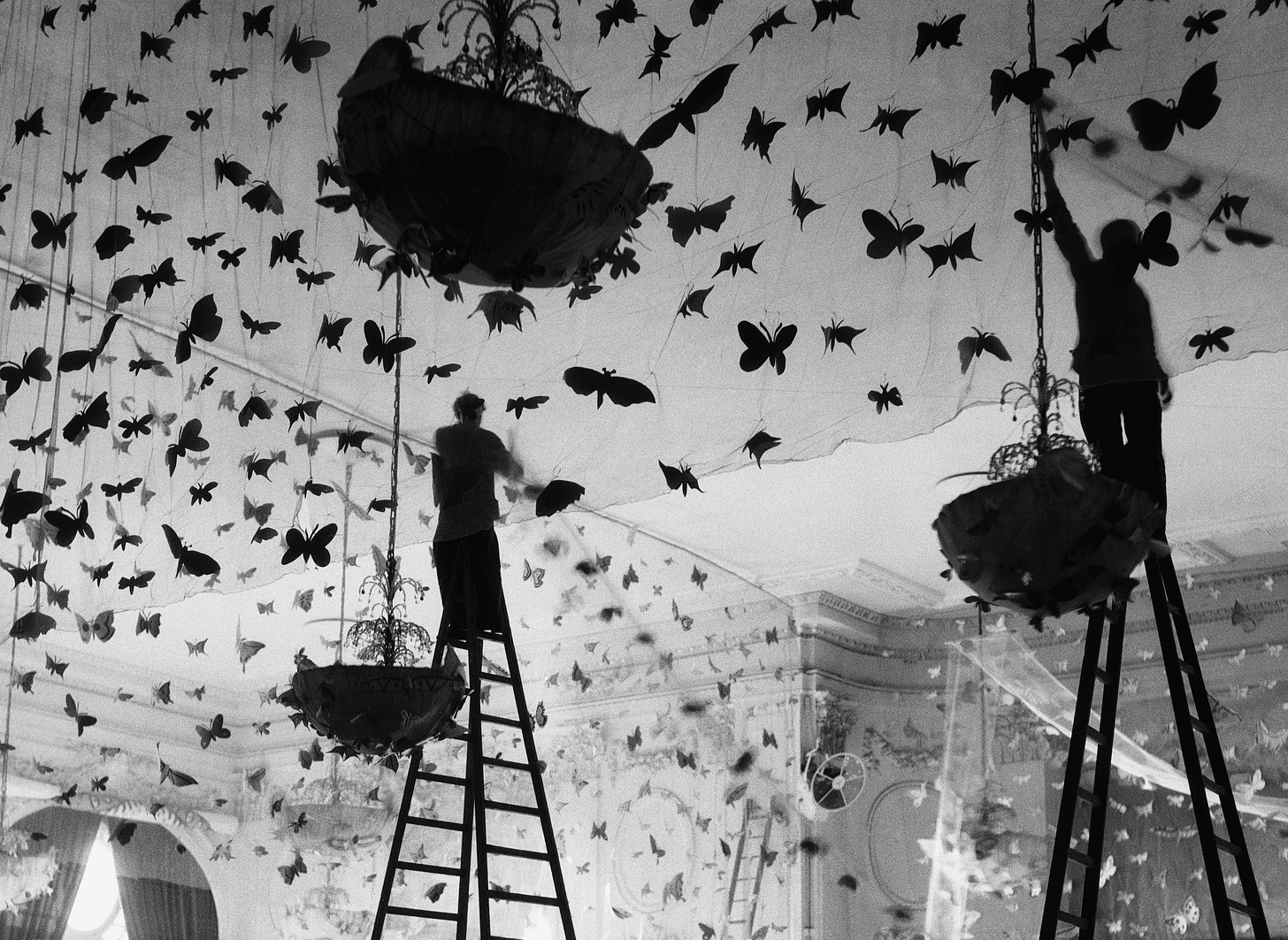A constellation of lookers
Fragments, vol. 5
Gala "Flowers and Butterflies", Salle des Ambassadeurs du Casino, Cannes, Jacques Henri Lartigue, 1935
Above my writing desk, I have hung postcards of paintings by artists who lived within walking distance from our farm. They were naturalists, all of them, so they painted in the field. They spent their spare time looking at their canvas and then back at nature, gradually learning to see what was there, while capturing their seeing on the canvas. I don’t know why it felt so important to them—if they felt exhilarated by the layered richness of reality, the way I do when I feel compelled to write, or if something else drove them. But it feels good to look at the results of their labor. Studying what they looked at, it is like they are teaching me how to see my landscape.
As I go for my midday run, I pass through a field that one of my postcards depicts. Before I saw the painting, this field used to just be a grey, flat plane, but now it vibrates with the vision of the autistic farmhand who stood out here for hours in 1943, looking. That is a gift.
The artists I have hung above my desk didn’t belong to a scene. They didn’t know each other; they were all outsiders of one kind or another. Apart from the autistic farmhand, there was also a homosexual German art collector hiding here from the Nazis, and a guy who made a quarry on his farm and spent 40 years carving giant phalluses of stone. Most of the painters I’m drawn to were not friends with the other painters working in the area, and they didn’t know that anyone would ever see their art: it was a purely personal need that drove them out into the fields, a need to look at the world around them and to capture what they saw in words or sculptures or paintings.
Did they feel alone? Did they feel strange for having this need to look for hours at fields and barns, contemplating their lifeworld, when others seemed fine just driving across the fields, or locking their tractor in the barn? I would think so. I do.
But though they never found communion in a scene, I can’t help but think they are a constellation. Like stars, they looked isolated up close—but seen from over here, they are a pattern in the sky. They were a constellation of lookers. Standing in a rainy field in 1913 or by a green pond in 1984, they looked up as the night fell and they saw stars, thousands of them. But all of them seemed far away, cold, and out of reach . . . there was no way for them to know that some of these distant stars, spread randomly across the sky, were actually part of the same constellation as them. But from where I sit, in my old woodwork room turned writing studio, in April 2025, I see their pattern.
That is perhaps a sentimental image. But on days like this, when rain hammers the window, and my decision to live out here and spend my days thinking about pear trees and unknown painters makes me feel more than a little odd, I like to imagine that I’m a part of their constellation, and it feels good. Contemplating your lifeworld is a deep human need; it connects us, somehow.
In this post, I’m going to collect some scraps and fragments that I cut from essays over the last six months. (The above was one of the fragments.)
There will be a long fragment about love as a skill that you can practice and a shorter one about essays as a space where “truth plays out,” rather than a medium of knowledge transmission.
At the end, there is also a collection of links to essays and films I’ve been struck by recently. For previous fragment collections, see here, here, here, and here.
Love is a skill
I have to admit that I don’t remember the precise date, but sometime in June, Johanna and I will have been a couple for 12 years. We’ve always been pretty casual about things like that (we have, for instance, been married for five years but haven’t yet gotten around to buying rings1). But we’ve never been casual about the relationship itself: it feels like our life’s work, in a way, and a craft.


